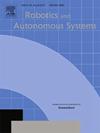An expedited BDI agent architecture: Improving the responsiveness of agent-based autonomous systems for handling critical situations
IF 4.3
2区 计算机科学
Q1 AUTOMATION & CONTROL SYSTEMS
引用次数: 0
Abstract
This work presents improvements on BDI agent architectures towards expedited behaviour. Standard and even real-time BDI architectures, due the characteristics of their deliberative processes, can take considerable time deciding what to do, and this can present a significant delay when a prompt reaction is required in a critical situation. To address this issue without simply adding a pure reaction layer, we introduce a novel, expedited, BDI architecture capable of maintaining effective reasoning while providing adequate and fast reaction to perceptions that occur in a critical situation (E2BA). By ‘adequate’ we mean that a proper action is promptly decided and that the agent temporarily enters into an exceptional operation mode. In this paper we present a concrete implementation for our proposal as a variation of Jason, the leading BDI programming framework. Considering that our main target applications lay in the domain of robotics, we also make our implementation suitable to be used in conjunction with the Robot Operating System (ROS). We evaluate the proposed mechanism through two experiments. The first experiment shows significant (at least 2.7x) reaction-time improvements obtained from using our expedited Jason in comparison with ‘standard’ Jason. Moreover, the results show that expedited Jason reaction-times are not significantly affected as the agent gets busier (it is constant), in contrast to the exponentially increasing response-time of standard Jason. The second experiment addresses the usage of the proposed architecture within a realistic software-in-the-loop (SIL) application scenario: controlling an uncrewed aerial vehicle (UAV) on a fire-fighting mission. This second experiment is not only important for its realistic nature and for reinforcing the reaction-time improvements, but also because it illustrates the importance of changing the agent’s operation mode when performing a failsafe procedure. The permanent overhead introduced by EB2A is very small, not more than 0.5% of the standard BDI reasoning cycle time.
加速的BDI代理体系结构:改进基于代理的自主系统处理危急情况的响应能力
这项工作提出了对BDI代理体系结构的改进,以加速行为。标准的甚至实时的BDI体系结构,由于其审议过程的特点,可能会花费相当长的时间来决定要做什么,当在危急情况下需要快速反应时,这可能会造成严重的延迟。为了解决这个问题,而不是简单地添加一个纯粹的反应层,我们引入了一种新颖、快速的BDI体系结构,能够在保持有效推理的同时,对危急情况下发生的感知提供充分和快速的反应(E2BA)。所谓“适当”,我们指的是迅速决定适当的行动,代理暂时进入一种特殊的操作模式。在本文中,我们提出了一个具体的实现方案,作为领先的BDI编程框架Jason的变体。考虑到我们的主要目标应用程序位于机器人领域,我们还使我们的实现适合与机器人操作系统(ROS)结合使用。我们通过两个实验来评估所提出的机制。第一个实验显示,与“标准”Jason相比,使用我们的加速Jason获得了显著(至少2.7倍)的反应时间改进。此外,结果表明,与标准Jason的响应时间呈指数级增长相比,随着代理变得更忙(它是恒定的),加速Jason的反应时间没有显著影响。第二个实验解决了在一个现实的软件在环(SIL)应用场景中所提出的体系结构的使用:控制执行消防任务的无人驾驶飞行器(UAV)。第二个实验的重要性不仅在于它的现实性和加强反应时间的改进,还在于它说明了在执行故障安全过程时改变代理操作模式的重要性。EB2A引入的永久开销非常小,不超过标准BDI推理周期时间的0.5%。
本文章由计算机程序翻译,如有差异,请以英文原文为准。
求助全文
约1分钟内获得全文
求助全文
来源期刊

Robotics and Autonomous Systems
工程技术-机器人学
CiteScore
9.00
自引率
7.00%
发文量
164
审稿时长
4.5 months
期刊介绍:
Robotics and Autonomous Systems will carry articles describing fundamental developments in the field of robotics, with special emphasis on autonomous systems. An important goal of this journal is to extend the state of the art in both symbolic and sensory based robot control and learning in the context of autonomous systems.
Robotics and Autonomous Systems will carry articles on the theoretical, computational and experimental aspects of autonomous systems, or modules of such systems.
 求助内容:
求助内容: 应助结果提醒方式:
应助结果提醒方式:


